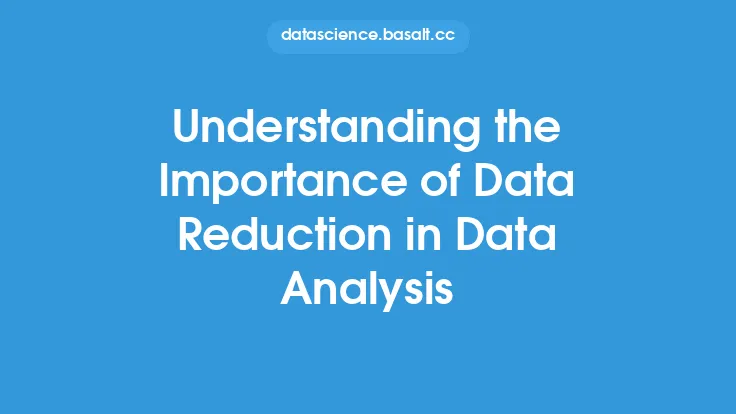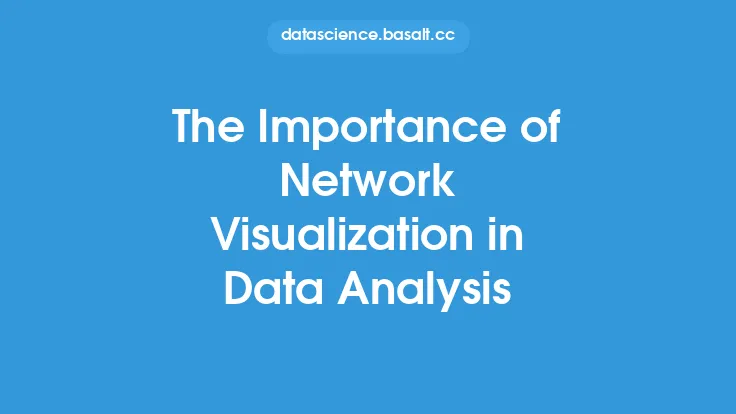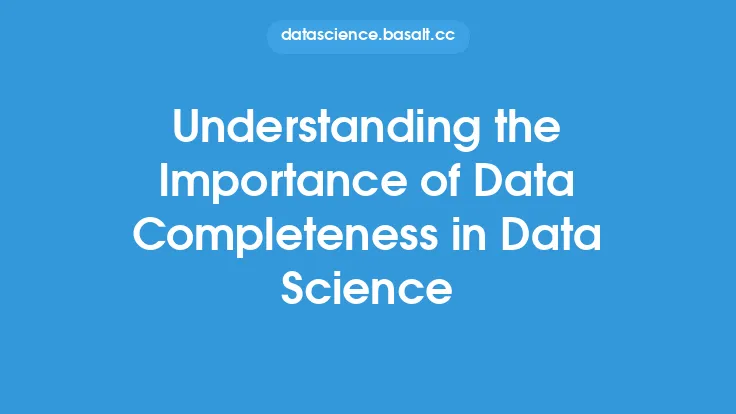Data analysis is a crucial aspect of any organization, as it enables informed decision-making, drives business growth, and provides valuable insights into customer behavior, market trends, and operational efficiency. However, before any analysis can take place, the data must be prepared, which is a critical step that is often overlooked. Data preparation is the process of transforming raw data into a clean, consistent, and reliable format that can be used for analysis. In this article, we will explore the importance of data preparation in data analysis and why it is a vital step in the data science workflow.
Introduction to Data Preparation
Data preparation involves a series of steps that include data cleaning, data transformation, data reduction, and data formatting. The goal of data preparation is to ensure that the data is accurate, complete, and consistent, which is essential for producing reliable and meaningful insights. Data preparation is a time-consuming and labor-intensive process that requires a deep understanding of the data, as well as the tools and techniques used to prepare it. Despite its importance, data preparation is often underestimated, and its significance is only realized when the analysis is underway, and the data is found to be incomplete, inaccurate, or inconsistent.
The Challenges of Data Preparation
Data preparation is a complex process that poses several challenges, including data quality issues, data integration, and data scalability. Data quality issues arise when the data is incomplete, inaccurate, or inconsistent, which can lead to biased or incorrect insights. Data integration is another challenge, as it involves combining data from multiple sources, which can be time-consuming and require significant resources. Data scalability is also a challenge, as the volume and velocity of data continue to grow, making it difficult to prepare and analyze. Additionally, data preparation requires a deep understanding of the data, as well as the tools and techniques used to prepare it, which can be a challenge for organizations that lack the necessary skills and expertise.
The Benefits of Data Preparation
Despite the challenges, data preparation offers several benefits, including improved data quality, increased efficiency, and enhanced insights. Improved data quality is essential for producing reliable and meaningful insights, as it ensures that the data is accurate, complete, and consistent. Increased efficiency is another benefit, as data preparation enables organizations to automate many of the tasks involved in the analysis process, freeing up resources for more strategic activities. Enhanced insights are also a benefit, as data preparation enables organizations to uncover hidden patterns and relationships in the data, which can inform business decisions and drive growth.
The Role of Data Preparation in Data Analysis
Data preparation plays a critical role in data analysis, as it enables organizations to extract insights and meaning from the data. Data analysis involves a series of steps, including data collection, data preparation, data analysis, and data visualization. Data preparation is a vital step in this process, as it ensures that the data is clean, consistent, and reliable, which is essential for producing accurate and meaningful insights. Without data preparation, the analysis is likely to be flawed, and the insights produced may be biased or incorrect.
The Tools and Techniques of Data Preparation
Data preparation involves a range of tools and techniques, including data cleaning, data transformation, data reduction, and data formatting. Data cleaning involves identifying and correcting errors in the data, as well as handling missing values and outliers. Data transformation involves converting the data into a format that is suitable for analysis, such as aggregating data or creating new variables. Data reduction involves selecting a subset of the data that is relevant to the analysis, which can help to improve efficiency and reduce costs. Data formatting involves presenting the data in a format that is easy to understand and analyze, such as using data visualization tools or creating reports.
The Future of Data Preparation
The future of data preparation is likely to be shaped by advances in technology, including artificial intelligence, machine learning, and automation. These technologies have the potential to automate many of the tasks involved in data preparation, freeing up resources for more strategic activities. Additionally, the growing use of cloud-based data platforms and big data analytics is likely to drive demand for data preparation tools and techniques that can handle large volumes of data. As data continues to grow in volume, velocity, and variety, the importance of data preparation will only continue to grow, making it a critical step in the data science workflow.
Conclusion
In conclusion, data preparation is a critical step in the data analysis process, as it enables organizations to extract insights and meaning from the data. Despite its importance, data preparation is often underestimated, and its significance is only realized when the analysis is underway, and the data is found to be incomplete, inaccurate, or inconsistent. By understanding the importance of data preparation, organizations can improve the quality of their data, increase efficiency, and enhance insights, which can inform business decisions and drive growth. As data continues to grow in volume, velocity, and variety, the importance of data preparation will only continue to grow, making it a vital step in the data science workflow.





